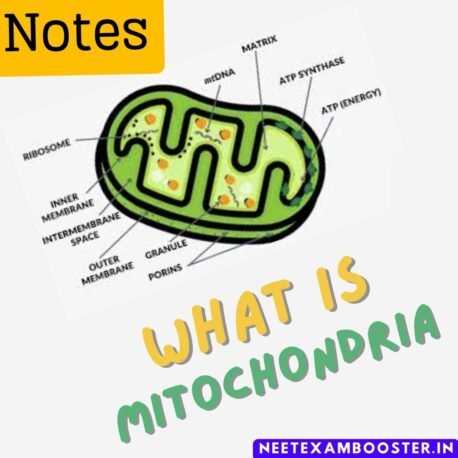What is Mitochondria?
- Mitochondria are intracellular organelles found in almost all human cells, thought to be derived from aerobic bacteria that lived in a symbiotic relationship with proto-eukaryotic cells.
- Human cells contain hundreds to thousands of mitochondria, except for mature red blood cells which rely on anaerobic metabolism and contain no mitochondria.
- Mitochondria form a dynamic connected network and are maternally inherited.
- Mitochondria have four main compartments: outer membrane, inter membrane space, inner membrane (folded into cristae), and matrix (where most metabolic reactions take place).
- Mitochondrial DNA is found in the matrix, within DNA protein complexes called nucleoids.
- Mitochondria are essential for aerobic metabolism and energy production through oxidative phosphorylation, involving several metabolic pathways like beta oxidation, the Krebs cycle, and synthesis of iron sulfur clusters.
- Mitochondria maintain, replicate, and transcribe their own DNA, and translate messenger RNA into protein.
- Human mitochondrial DNA is a double-stranded circular molecule containing approximately 16,500 base pairs, coding for 13 protein subunits, 2 ribosomal RNAs, and 22 transfer RNAs.
- Mitochondrial DNA repair is ineffective, with a mutation rate over 10 times that of nuclear DNA.
- Mitochondrial markers include ATP synthase (inner membrane), succinate dehydrogenase (inter membrane space), creatine kinase and adenylyl kinase (inter membrane space), glutamate dehydrogenase, pyruvate dehydrogenase, and enzymes of the TCA cycle and oxidation of fatty acids (matrix).
- Proteins are imported into the mitochondria through two systems: TOM (translocase of the outer membrane) and TIM (translocase of the inner membrane).
- Mitochondrial dysfunction can cause neurodegenerative disorders, including mitochondrial myopathies characterized by impaired energy production and affecting organs with high energy demand.
- Mitochondrial myopathies can be caused by mutations and/or defects in mitochondrial DNA, maternally inherited and resulting in heteroplasmy.
- The ongoing remodeling of the mitochondrial network is a function of the mitochondria.
- Additional mitochondrial roles include apoptosis, production of reactive oxygen species, calcium homeostasis, maintenance of the lipid membrane, and immunity.

Mitochondrial Myopathies:
- Affect organs with high energy demand, such as the brain.
- Prevalence is about 13 per 100,000.
- Caused by mutations and/or defects in mitochondrial DNA, maternally inherited.
- Heteroplasmy can cause variable expression of diseases.
- Pathophysiology includes impaired oxidative phosphorylation and decreased ATP production, leading to increased glycolysis and lactate and alanine accumulation.
- Common clinical features: external ophthalmoplegia, ptosis, and exertion muscle weakness.
- Diagnostics: genetic studies, muscle biopsy, immunohistochemistry, and lab studies.
- Treatment: mainly supportive.
Mitochondrial Myopathy Subtypes:
- MELAS: mitochondrial encephalomyopathy, lactic acidosis, and recurring stroke-like episodes.
- MERRF: myoclonic epilepsy with ragged red fibers, caused by a point mutation in the mitochondrial MT-TK gene.
- CPEO: chronic progressive external ophthalmoplegia.
- KSS: Kearns-Sayre syndrome, characterized by ophthalmoplegia, retinous pigmentosa, impaired electrical activity of the heart, and LHON (Leber hereditary optic neuropathy).



















